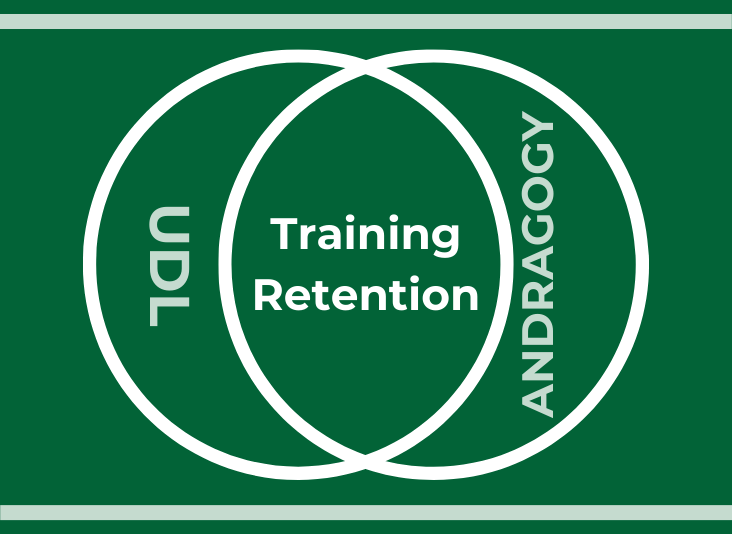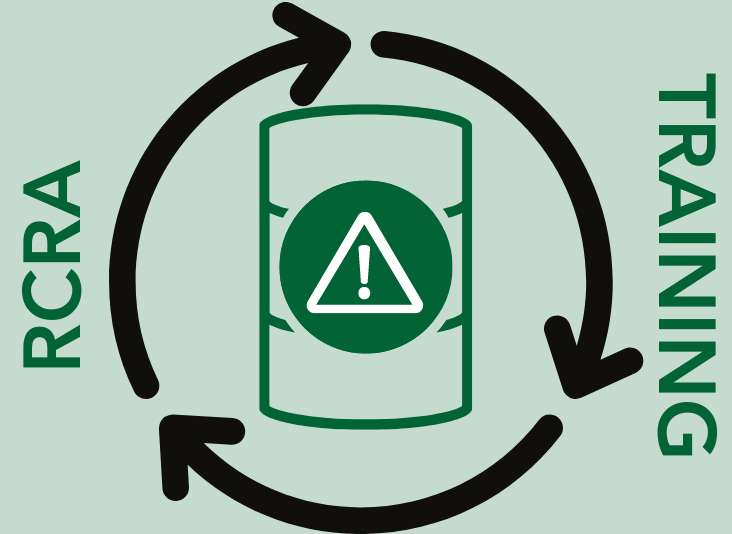Designing EHS Training for Retention
Environmental, health, and safety (EHS) training is vital across industries and roles. But trainings that don’t apply best practices for adult learning tend to be immemorable and ineffective—risking non-compliance and unsafe practices from ill-equipped personnel. It’s essential that an organization’s training program be based on the most modern evidence-based methods, ones which support long-term knowledge retention.
Fortunately, there are ways of designing trainings for memorability, beginning with two key concepts:
- Andragogy (principles of adult learning)
- Universal Design for Learning (UDL)
To accept these concepts as essential to training development is to recognize that your learners are not machines, to acknowledge that each person has had unique experiences, and to understand that everyone requires different learning support.
Andragogy
Andragogy, the principles of which were defined by educator Malcolm Knowles in 1980, posits that adults learn drastically differently from children. Children require close guidance, while adults learn best when training is independent and self-directed. To learn most effectively, adults also need low-stakes tasks that allow for practice and frequent opportunities to express the knowledge they’re gaining.
The theory emphasizes four concepts:
- Self-direction: Trainees motivate themselves to learn and direct themselves through lessons.
- Experience: Experience is everything! Repeatable, varied activities can become a core part of each trainee’s standard operating procedures (SOPs).
- Relevance: Trainings should directly support each learner’s daily tasks. Irrelevant information may overwhelm or confuse trainees, or they may tune the training out because they don’t think the information matters to them.
- Problem-solving: Challenging trainees to solve real-world problems teaches them how to cope with problems that may arise within the scope of their work.
Busy adult learners are far more likely to retain information from trainings that thoughtfully apply these principles.
UDL: Designing for Accessibility
After considering how adults learn, we need to consider how different adults learn. That’s where UDL comes in. This framework, based on scientific research on how people learn, is used to eliminate barriers and maximize engagement. To apply UDL, instructional designers need to ask themselves about:
- Engagement, or why the trainee should want to learn
- Representation, or what content formats will appeal to the widest variety of learners
- Action and expression, or how the trainee will express their knowledge
Engagement
Instructional designers need to ask themselves why the trainee should be motivated to learn; this is where customization is key. Bland “out of the box” trainings, created without a design framework in mind, will not motivate the trainee and help them understand the purpose of the content. Overly-dense, non-specific training may even cause learners to tune out presented information. Customization helps trainees understand how necessary the content is to safety and smooth operations.
To make learning relevant and help trainees retain lessons, customization should apply to:
- Information and media
- Activities included in the curriculum
- The look and feel of the training
Training designed with a practical understanding of trainees’ daily environment and tasks will make a long-lasting impression on learners—and help keep the workplace compliant, risk-free, and functional at peak performance.
Representation
Everyone learns differently. A piece of information that sticks out to one person may not be so memorable to others. Using varied media to present information can ensure that all learners will find something in the training to keep their attention.
Trainings that force employees to read through dense PowerPoint slides may not be effective for more hands-on learners. For example, let’s say someone is trying to learn about chemical hazards by listening to a lecture. This static approach may be fine for some learners, but to successfully appeal to a broader pool, audio can be paired with a proven learning booster like a quiz or scenario about what can go wrong when using chemicals.
Varied media and resources can include:
- Text
- Animations
- Images
- Videos
- Audio
- Interactive elements
- And more!
A wide array of media supports content applicability and maximizes memorability for as many learners as possible.
Action and Expression
Finally, an instructional designer must set learning goals to make the takeaways clear and give trainees opportunities to practice what they’ve learned. To strategically apply new knowledge, learners must be challenged and have opportunities to problem-solve. To apply this concept, be sure trainings offer:
- Low-stakes tasks that are frequent, repeatable, and give answer-specific feedback. These should not be pass/fail with no room for improvement—the learner should learn from every test or requested interaction without fear of failure.
- A variety of activity formats, like multiple choice-answer questions, true-false questions, drag-and-drop activities, fill-in-the-blanks questions, scenario-based questions, and more. Varied formats improve accessibility and reinforce comprehension.
Partner for Well-Designed Trainings
Learn more about how Triumvirate Environmental utilizes andragogy and UDL to design our trainings by watching our recent webinar, and contact us to discover how we can make your trainings memorable now and into the future.






